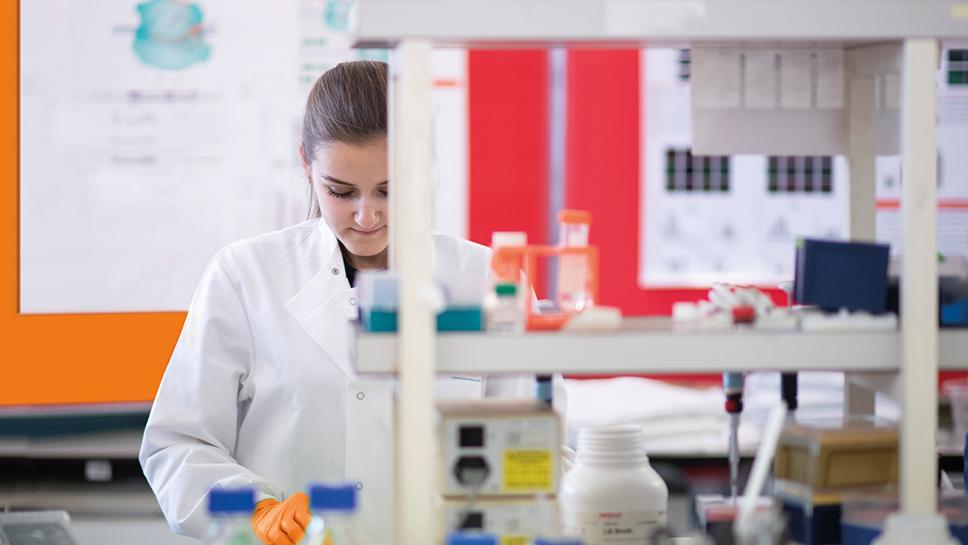
Myotonic dystrophy is a genetic condition that causes progressive muscle weakness and wasting. It typically affects muscles of movement and commonly affects the heart, breathing muscles, swallowing muscles, bowels, lens of the eye and brain. It is one of the most common forms of muscle wasting conditions in adults, but it can also be present from childhood. In this case, the condition is called “congenital muscular dystrophy”.
There is currently no known cure for either adults or children living with the condition. It is important that we continue working towards a day there are accessible treatments and cures for each and every muscle-wasting condition. Therefore, as part of International Myotonic Dystrophy Awareness Day, we aim to bring the MDUK-funded research into myotonic dystrophy closer to you.
What is myotonic dystrophy?
There are two types of myotonic dystrophy. Myotonic dystrophy type 1 (DM1) is more common and more severe than myotonic dystrophy type 2 (DM2). DM1 is caused by changes in a gene called DMPK, that cause the gene to become toxic to muscle cells. DM2, also called proximal myotonic myopathy, is caused by similar changes in the CNBP gene.
Recently completed and continued research
One of our recently completed research projects, led by Professor Matthew Wood at the University of Oxford, focused on the pre-clinical development of molecular patches (also known as antisense oligonucleotides). The research team found that they could block the toxic effects of genetic changes seen in people with myotonic dystrophy type 1 (DM1). Their molecular patch could reverse the deterioration in cells taken from patients living with DM1 and in mouse models, and they saw the recovery of the correct contraction and relaxation of the muscles in the models of the condition too. Professor Wood and colleagues also found an effective way to get the patch into the heart and diaphragm in mice. Finally, the researchers established the doses at which the patch is most efficient, as well as the best way to administer it. This research takes us a step closer to clinical trials in patients.
Dr Judith Sleeman and colleagues at the University of St Andrews are currently investigating how genetic material within cells of people with DM1 forms clumps and how these clumps interact with other structures within the nucleus of the cell. The nucleus is where the DNA lives in the cell and so this is an important study that aims to answer why are these clumps toxic for the cell. Its results could help pave the way for the development of potential therapies.
Newly funded research projects
As part of our 2021 Grant Round, we awarded funding to three researchers at University College London to carry out different types of studies into myotonic dystrophy.
Dr Chris Turner is carrying out a natural history study of people with congenital myotonic dystrophy. Dr Turner’s team is collecting data from people with congenital myotonic dystrophy, with the aim of understanding which traits are clinically useful to assess the condition.
Dr Umesh Vivekananda will use brain imaging to study myotonic dystrophy. His team aims to investigate functional brain activity in people with DM1, because they can experience problems in their central nervous system, for example excessive daytime sleepiness and depression.
Dr Diego Kaski will study balance in people with DM1. His team aims to develop measurable characteristics (called biomarkers) that will help us to better predict how the condition will develop and progress over time for individuals. These biomarkers could also be useful in clinical trials.
It is thanks to your donations that we can fund these vital projects. It is only through your support that we can continue to fund the research that takes us closer to finding treatments for muscle-wasting conditions. Donate now and help change the lives of the 110,000 of people living with these conditions in the UK. Thank you for your support.
